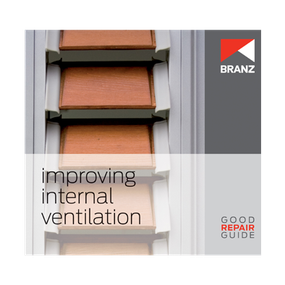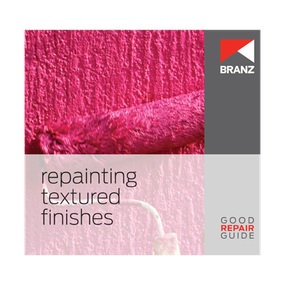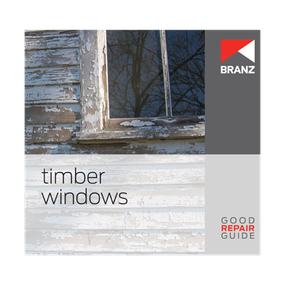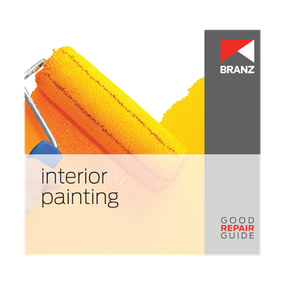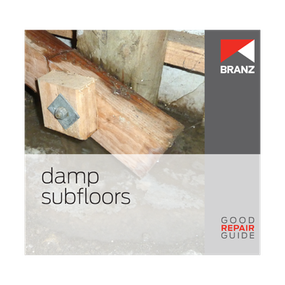Good Repair Guide: Improving internal ventilation
All houses need a constant supply of fresh outdoor air to replenish indoor oxygen levels and replace stale, moisture-laden air that is generated by household activities.
Poor indoor air quality comes from a range of sources, including:
- high indoor moisture levels from unvented kitchen or bathroom steam, unvented gas heaters or clothes dryers
- pollutants and discharges from solid-fuel burners, open fires, gas heaters and cookers, and occupant activity such as smoking inside
- volatile organic compounds (VOCs) given off by new building materials, paint and carpets
- outdoor sources of pollution such as vehicle emissions or fireplace emissions.
In most New Zealand homes, opening windows will be sufficient to meet most air quality requirements, so long as this is used in conjunction with localised externally vented air extraction systems such as kitchen rangehoods and bathroom extractor fans to remove moisture and pollutants. Where the occupants are not able or choose not to open windows regularly, there is likely to be a need for other means of ventilation.
This Good Repair Guide outlines strategies for maintenance tradespeople to improve the ventilation of spaces within a domestic building.
Good Repair Guide: Repainting textured finishes
Texture-coated claddings - typically stucco, EIFS (exterior insulation and finishing system) or texture-coated flush-stopped fibre-cement - rely on good detailing and installation, a cavity, a coating to seal the surface against moisture penetration and regular maintenance of that coating to ensure the surface remains weatherproof. Other claddings with similar finishes include plastered masonry veneer, lightweight aerated concrete and polystyrene block walls.
Repainting over the texture is required as recommended by the coating manufacturer. Recoating to keep the substrate well protected may be necessary even if the appearance of the coating is still acceptable.
This Good Repair Guide explains what textured-coated cladding systems are and looks at rules and regulations, health and safety, tools, recoating and maintenance of repainted textured finishes.
Good Repair Guide: Timber windows
Until the 1970s, the main material used for window frames and sashes in New Zealand houses was timber. A large proportion of houses still have timber windows, and these can last for a very long time if well maintained and repaired when necessary.
This Good Repair Guide covers the repair of timber windows using materials and styles to match the existing. It looks at common problems, how to repair and replace windows, rules and regulations and health and safety.
Good Repair Guide: Interior painting
All interior painted finishes within a domestic building deteriorate slowly over time and will require repainting to clean and freshen the surfaces or to continue protecting the substrate. The frequency of repainting depends on the amount of fading caused by UV exposure, damage or wear, and internal humidity levels - high levels of internal moisture that cause condensation to form on surfaces can result in mould growth, staining and paint deterioration.
Painted interior surfaces include ceilings, walls, window frames, doors and door frames, kitchen joinery and trims such as cornices (or scotias), architraves and skirtings. Materials that are likely to have a paint finish include timber, plasterboard, fibrous plaster, softboard, hardboard, fibre-cement, particleboard, MDF and pressed metal ceiling and wall panelling.
This Good Repair Guide highlights common problems, rules and regulations, health and safety, preparation, selecting paint, how to paint, brushes, roller and other applications, spray painting and cleaning up.
Good Repair Guide: Horizontal timber weatherboards
Over time, water entry through poorly installed or maintained weatherboard cladding may cause significant structural damage and other problems long before any symptoms become apparent on the exterior or interior of a building. Regular checks and proper maintenance are critical to ensuring weathertightness.
If a leak or any associated damage becomes obvious, it is advisable to consult a registered building surveyor in order to determine the extent of the problem and necessary repair options.
This Good Repair Guide highlights common problems and causes, types and extent of damage, rules and regulations, health and safety, tools, repairing and replacing weatherboards as well as related documents and standards.
Good Repair Guide: Damp subfloors
In a series of house condition surveys that BRANZ carried out on randomly selected houses around New Zealand in 1994, 1999, 2005 and 2010, all of the surveys identified a lack of subfloor ventilation and subsequent higher moisture levels as a problem for houses with suspended floors. Of the houses surveyed, 66% did not meet current requirements for ventilation while 33% had less than a third of the current requirements. The resulting high level of moisture was a significant factor in visible deterioration such as corrosion and decay.
This Good Repair Guide looks at the consequences and causes of subfloor dampness, rules and regulations, health and safety and solutions for subfloors.
